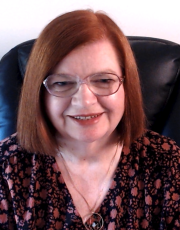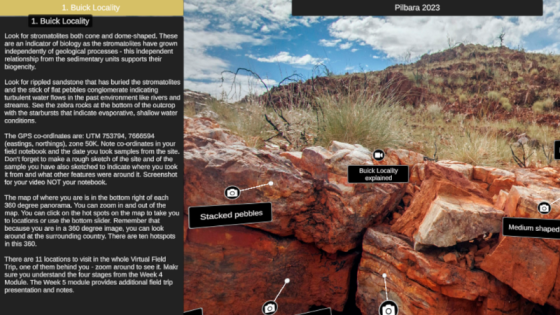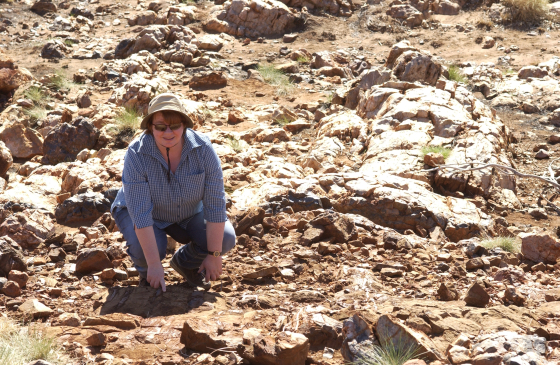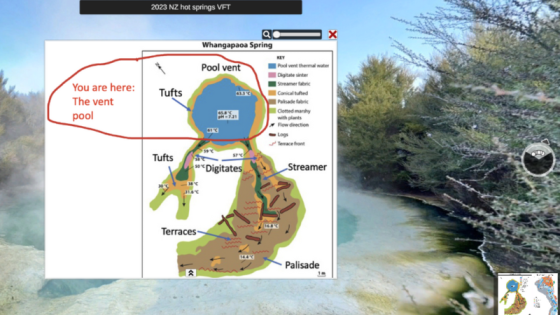Published 4 April 2024
When UNSW Professor of Science Communication and Astrobiolology Carol Oliver created the first immersive Virtual Field Trip (VFT) with NASA Learning Technologies, her objective was to place students in an environment inaccessible to most undergraduates.
But now she knows there are many other dimensions: “The COVID pandemic made me consider equity and diversity issues in real field trips for any discipline that VFTs could address for those students,” says Prof. Oliver. “Then, generative AI emerged, creating challenges in assessments, but also opportunities. The VFT environment requires critical thinking that can be tracked, and encourages engagement – AI cannot provide critical thinking or reflection, but it can be an effective tutor if those human traits are applied.”
For Prof. Oliver, who has continued to develop VFTs internationally and within UNSW since 2008, her greatest satisfaction is that a tool to make VFTs with no training needed has now been developed. It's been produced through Carol's partnership with fellow academic, Mr David Edwards, and a team of UNSW learning designers and media & immersive technologies developers from the PVC Education Portfolio. The Teaching and Learning Immersive Authoring Tool (TALIA) is now ready for use and accessible to UNSW colleagues through its TALIA Teams site (TALIA Community | General | Microsoft Teams).
“The tool is so easy to use, demonstrated by the UNSW students who have already used it to make their own VFTs as part of an assessment,” says Prof. Oliver. “I am aware of others now making VFTs using TALIA, including in chemistry, law, medicine, Earth sciences, and the built environment.”
Pilbara, WA Virtual Field Trip Example
In recognition of her groundbreaking work in the development and use of VFTs in tertiary education as an engaging and active learning assessment tool, Prof. Oliver has been awarded a 2023 Citation for Outstanding Contribution to Student Learning as part of the Australian Awards for University Teaching (AAUT). She began her work on VFTs nearly 20 years ago, prompting her colleagues at Arizona State University to invite her to help build a suite of internet-delivered VFTs for high-school and public audiences, focused on three astrobiology-related Australian sites as part of a US $6m NASA grant. That led to a collaboration at UNSW with iCinema in 2015 as part of a significant internal grant, in which she helped to create an astrobiology VFT as a university “education through exploration” learning and assessment tool.
Associate Professor Alison Beavis, Deputy Dean of Education, UNSW Science, says,
“Carol is a trailblazer and a pioneer in embedding virtual field trips in education. This award is such wonderful recognition for her sustained contributions to the educational experience at UNSW and for the impact on practice she has globally.”
While VFTs have been developed at the high-school level for some time, Prof. Oliver was the first to apply them to tertiary education specifically as an assessment tool.
“The TALIA tool was built entirely for the pedagogy required in the higher-education environment. UNSW is leading in creating this tool for the higher-education setting,” she says.
To develop a VFT, the instructor gathers data (for example, field samples in astrobiology), images, sound, video, documents, and other digital artefacts to create a VFT for any location appropriate to the discipline. These are then “seeded”, or digitally placed, in a 360-degree virtual environment for students to use critical thinking to make judgements and decisions.
Professor Carol Oliver in Pilbara, WA while making a VTF
"In my VFT on early life on Earth in the Pilbara, students use sample selection to rapidly read the stories that rocks as old as 3.48 billion years tell of the first life on Earth that we can detect. Students then apply the learning from that assessment to read the stories as they emerge from ancient rocks on Mars, working with NASA to consider sites in and around Jezero Crater on Mars that might harbour evidence of past life.” Students do this in a single term, despite most having no geology background.
“We want students to observe, to make decisions and judgements about the information – to interrogate it and draw evidence-based conclusions, and then to apply that learning to create something new, in either individual or group assessments that do not require invigilation,” says Prof. Oliver. “It requires higher-order thinking and I get rich insights into student learning from the assessment.”
VFTs are also open to innovative ways of bridging between the virtual and real worlds. For example, in her astrobiology VFTs, Prof. Oliver asks the students to use paper and pen to make their field notes as they explore the virtual landscape, just as they would during traditional fieldwork.
“We found that students spent more time in the VFT and focused on collecting more-relevant samples when they had to detail their thinking in a field notebook. The class scores moved significantly towards high credit and high distinction, and student satisfaction increased” (Oliver & Teece, 2023).
Students are not the only ones who benefit from VFTs. Faculty members can use the process of developing a VFT for their courses as a way of reflecting on the course material in a more metacognitive way as they consider what digital artefacts to include and why.
Despite several decades of work on VFTs as an assessment tool, one barrier remained. Before 2021, higher-education VFTs required lengthy developer time, and as a result could cost $100,000 each. What if that could be turned around so that the developers make a single tool for multiple users at scale? In 2021, TALIA solved that problem for UNSW staff and students. It makes the intuitive creation of immersive VFTs available to any teacher or student, across a vast range of disciplines. TALIA is resident on a UNSW server that tracks student learning in a VFT, which can then be matched to assessment scores to allow teachers to refine their teaching to improve results and student satisfaction. The tool is freely available to all UNSW staff and students.
New Zealand hot springs Virtual Field Trip example
TALIA is already being adopted at the University of Auckland and has been used for cohorts of astrobiology students over the past three years. A new VFT collaboration has emerged with Georgia State University and NASA’s Jet Propulsion Laboratory. A new bushfire risk communication-focused VFT for Prof. Oliver’s third-year/postgraduate science communication course is under development, and she will be employing the TALIA tool.
Prof. Oliver’s science-communication teaching, and her developments in that area, were part of the AAUT citation award. She points out that storytelling is essential to all good communication.
“We are wired for storytelling by evolution and our social brains, as neuroscience has demonstrated. It is why we find it easier to remember stories than disconnected information,” says Prof. Oliver. “A critical advantage that TALIA has is in helping academics use storytelling in learning and teaching. VFTs are necessarily a story. By the end of my astrobiology courses, students can read the stories in the rocks, and reflect on the fact that in this vast universe, the only life we know of exists solely on Earth, a leftover in the formation of the solar system. We do not know if we are alone in the universe or not. I know that profound question has impacted my students who share their feedback with me, sometimes long after they have left UNSW.”
View some of the VFT examples developed with TALIA:
Pilbara, WA, VFT: https://immersivetechnologies-dev.teaching.unsw.edu.au/projects/deploy/V2EditorPUBLISH/?view=UTBIGsB-
New Zealand hot springs: https://immersivetechnologies-dev.teaching.unsw.edu.au/projects/deploy/V2EditorPUBLISH/?view=jRS2knhC
Discover more award-winning educators at UNSW
This article is written by Laura E. Goodin



